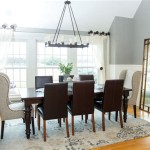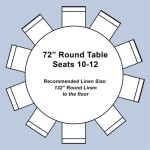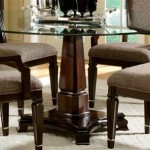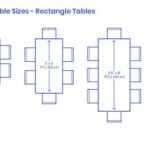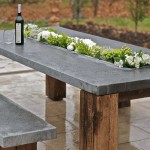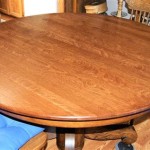Illuminating Grandeur: Selecting Lighting for Long Dining Room Tables
The dining room, especially one featuring a long table, serves as a central gathering place for meals, conversations, and celebrations. The lighting design within this space plays a pivotal role in shaping the atmosphere and enhancing the overall dining experience. Selecting the appropriate lighting for a long dining room table requires careful consideration of several factors, including the table's dimensions, the room's architectural style, the desired ambiance, and functional requirements. This article explores key considerations for choosing and implementing effective lighting solutions for long dining room tables.
Determining Optimal Lighting Levels and Luminaire Types
Achieving optimal lighting levels is paramount to creating a comfortable and inviting dining environment. Insufficient lighting can strain the eyes and make it difficult to appreciate the food and company. Conversely, excessive brightness can create an uncomfortable and harsh atmosphere. The appropriate lighting level for a dining room typically falls within the range of 30 to 50 foot-candles at table height. This level provides sufficient illumination for eating, socializing, and performing tasks such as serving food and clearing the table.
Several types of luminaires can be used to provide adequate lighting for a long dining room table. Chandeliers are a classic choice, adding elegance and grandeur to the space. For a long table, it may be necessary to install multiple chandeliers or a linear chandelier that spans the length of the table. Pendant lights are another popular option, offering versatility in terms of style and placement. They can be hung individually or in clusters to provide focused illumination over specific areas of the table. Recessed lighting can provide ambient illumination and complement other lighting sources. These lights are installed in the ceiling and distribute light evenly throughout the room. Track lighting offers flexibility in directing light to specific areas of the table, making it a suitable choice for highlighting decorative objects or artwork. Wall sconces can add a soft, ambient glow to the dining room, creating a warm and inviting atmosphere.
The selection of appropriate luminaire types should consider the aesthetic style of the dining room and the overall lighting design concept. The chosen luminaires should complement the décor and architecture of the room while providing the necessary illumination for the dining experience. A combination of luminaire types is often employed to create a layered lighting scheme, which provides both ambient and task lighting, allowing for greater control over the lighting levels and atmosphere.
Calculating Luminaire Placement and Spacing
Proper placement and spacing of luminaires are crucial for achieving even and balanced illumination across the entire length of a long dining room table. The dimensions of the table and the room's ceiling height significantly influence the optimal placement of lighting fixtures. A common guideline for chandelier height is to hang the fixture so the bottom is approximately 30 to 36 inches above the table surface. This height allows for adequate illumination without obstructing views across the table.
For long tables, a single chandelier may not be sufficient to provide adequate lighting. In such cases, multiple chandeliers or pendants can be used. When installing multiple fixtures, it is essential to ensure even spacing between them. A general rule of thumb is to space fixtures approximately two-thirds the length of the table apart. For example, if the table is 12 feet long, the fixtures should be spaced approximately 8 feet apart. This spacing helps to create a balanced and visually appealing lighting arrangement while ensuring that all areas of the table are adequately illuminated.
The placement of recessed lighting should also be carefully considered. Recessed lights should be positioned to provide general ambient illumination, supplementing the light from chandeliers or pendants. They should be spaced evenly throughout the room to avoid creating dark spots or uneven lighting. Dimmers can be installed on recessed lights to allow for adjusting the brightness levels, providing greater control over the ambiance of the dining room. Track lighting provides greater flexibility in directing light to specific areas of the table or room. The track can be mounted on the ceiling or wall, and individual light heads can be adjusted to focus light where it is needed most. Track lighting is a particularly useful option for highlighting artwork or architectural features in the dining room.
Selecting Bulbs, Color Temperature, and Dimmers
The selection of appropriate bulbs is an essential aspect of dining room lighting design. Different types of bulbs offer varying levels of brightness, color temperature, and energy efficiency. Incandescent bulbs produce a warm, inviting light that is well-suited for dining rooms. However, they are less energy-efficient than other types of bulbs. Halogen bulbs are brighter than incandescent bulbs and offer a similar warm color temperature. They are also more energy-efficient than incandescent bulbs. LED bulbs are the most energy-efficient option and offer a wide range of color temperatures. They also have a long lifespan, making them a cost-effective choice in the long run.
Color temperature is measured in Kelvin (K) and refers to the warmth or coolness of the light. Lower Kelvin values (e.g., 2700K to 3000K) produce a warm, yellowish light, while higher Kelvin values (e.g., 4000K to 5000K) produce a cool, bluish light. For dining rooms, a warm color temperature is generally preferred, as it creates a more inviting and relaxing atmosphere. Bulbs with a color temperature of 2700K to 3000K are often recommended for dining rooms.
Dimmers are an invaluable addition to dining room lighting, providing the ability to adjust the brightness levels to suit different occasions and moods. Dimmers allow for creating a more intimate and romantic atmosphere for dinner parties or a brighter, more functional lighting scheme for family meals. They also offer energy savings by reducing the amount of electricity consumed. Dimmers should be compatible with the chosen bulbs to ensure proper operation. LED bulbs, in particular, require dimmers that are specifically designed for use with LEDs. The installation of dimmers provides greater control over the lighting environment, enhancing the overall dining experience.
Considering the Room's Architectural Style and Decor
The architectural style and décor of the dining room should play a significant role in the lighting design process. The chosen lighting fixtures should complement the existing aesthetic and enhance the overall design concept. For example, in a traditional dining room with ornate moldings and antique furniture, a classic chandelier with crystal accents might be an appropriate choice. In a modern dining room with clean lines and minimalist décor, a sleek pendant light or track lighting system might be more suitable. The color and finish of the lighting fixtures should also coordinate with the room's color palette and materials.
The height of the ceiling is another important factor to consider. In rooms with high ceilings, larger chandeliers or pendants can be used to fill the vertical space and create a sense of grandeur. In rooms with low ceilings, smaller, more discreet lighting fixtures are more appropriate. The size and shape of the dining room table should also influence the choice of lighting fixtures. A long rectangular table may require multiple pendants or a linear chandelier to provide adequate illumination, while a round table may be adequately illuminated by a single chandelier.
The presence of natural light should also be taken into account. If the dining room receives ample natural light during the day, the artificial lighting may only be needed for evening meals or on overcast days. In such cases, the focus should be on selecting lighting fixtures that provide adequate illumination while also minimizing glare. The strategic placement of mirrors can also help to maximize natural light and create a brighter, more inviting space. The considerations of architectural style, décor, and the availability of natural light are all integral parts of a holistic lighting design approach.
Addressing Glare and Shadows
Glare and shadows can detract from the dining experience and create an uncomfortable atmosphere. Glare occurs when excessive light is reflected off shiny surfaces, such as tabletops or glassware. Shadows can create dark spots and make it difficult to see the food and company. Proper lighting design can help to minimize glare and shadows and create a more balanced and comfortable lighting environment. The use of lampshades or diffusers can help to soften the light and reduce glare. These accessories diffuse the light, spreading it more evenly throughout the room and minimizing the intensity of direct light. Positioning the luminaires strategically can also help to minimize shadows. Avoid placing light sources directly behind diners, as this can create harsh shadows on their faces.
The selection of bulbs with appropriate color rendering index (CRI) can also improve the quality of light and minimize shadows. CRI is a measure of how accurately a light source renders the colors of objects compared to a natural light source. Bulbs with a higher CRI (e.g., 90 or above) provide more accurate color rendering, making food look more appealing and reducing the appearance of shadows. The angle of the light beam can also affect the amount of glare and shadows. Wider beam angles distribute light more evenly, reducing the intensity of direct light and minimizing shadows. Narrower beam angles can create more focused illumination, but they can also increase the risk of glare and shadows. Experimenting with different beam angles and lighting positions can help to achieve the desired lighting effect while minimizing unwanted glare and shadows.
The use of layered lighting can also help to address glare and shadows. A layered lighting scheme combines ambient, task, and accent lighting to create a balanced and comfortable lighting environment. Ambient lighting provides general illumination, task lighting provides focused illumination for specific tasks, and accent lighting highlights decorative objects or architectural features. By combining these different types of lighting, it is possible to create a more visually appealing and functional lighting scheme while minimizing glare and shadows. Careful consideration of glare and shadow mitigation is vital for creating a comfortable and aesthetically pleasing dining room.

Baecere Minimalist Contemporary Long Strip Pendant Light

Bairn Long Panel Decorated Crystals Pendant Light

Modern Hanging Lighting Long Pole Dining Room Ring Led Pendant Ceiling Lamp Ebay

Led Restaurant Chandelier Light Luxury Modern Minimalist Dining Table Bar Long Strip Creative Home Indoor Lighting Pendant

Dining Room Lighting Chandelier Gingko 700 For Hospitality

How To Choose The Perfect Dining Room Light Fixture Graham S Living
Nordic Minimalist Chandelier Modern Dining Room Pendant Light Restaurant Long Strip Led Bar Table Drop

Dining Room Lighting Ideas And Inspiration From The Interior Design

Ultimate Guide To Lighting Up Your Dining Room

B Gold 80cm Brightness Dimmable Lightingshop

